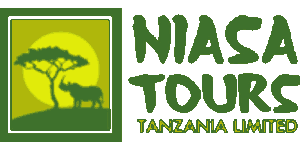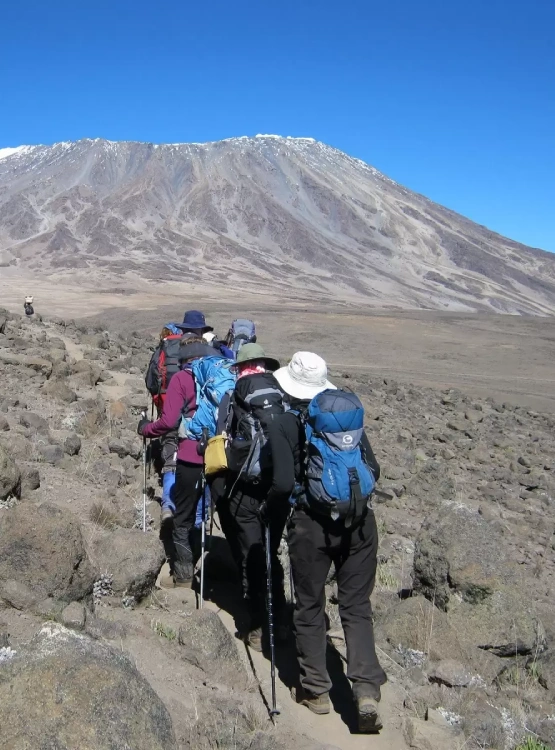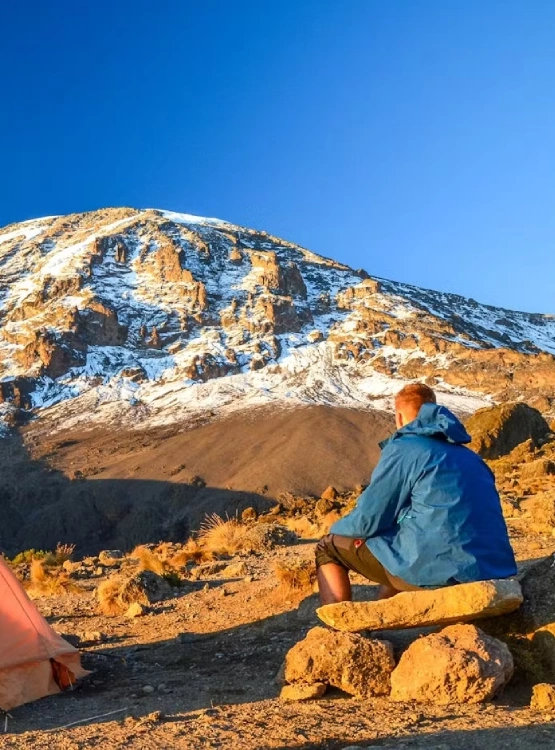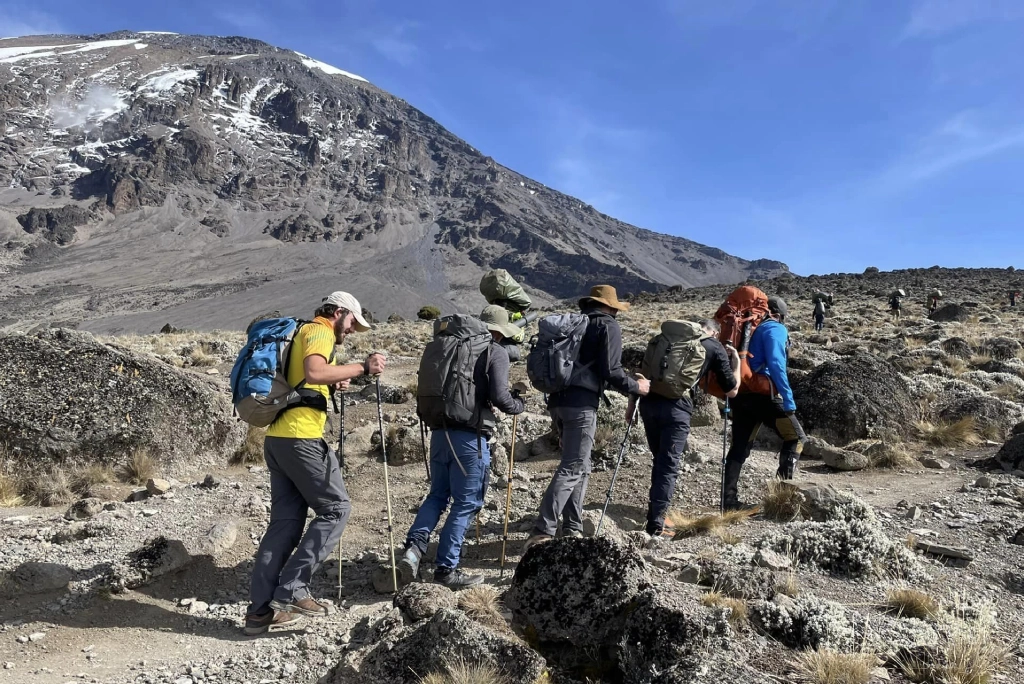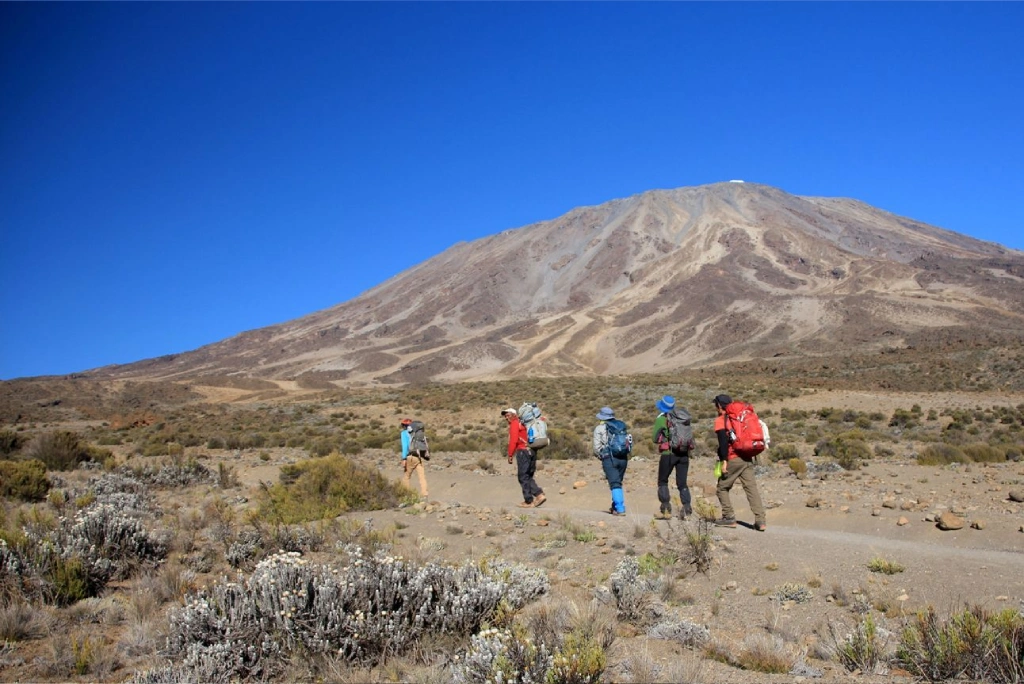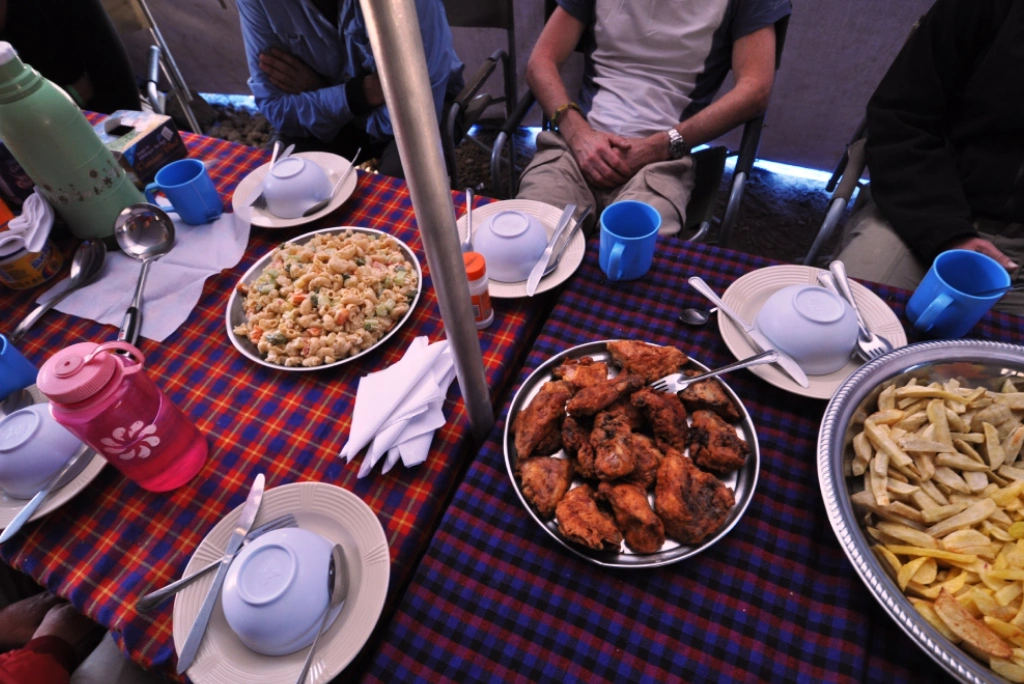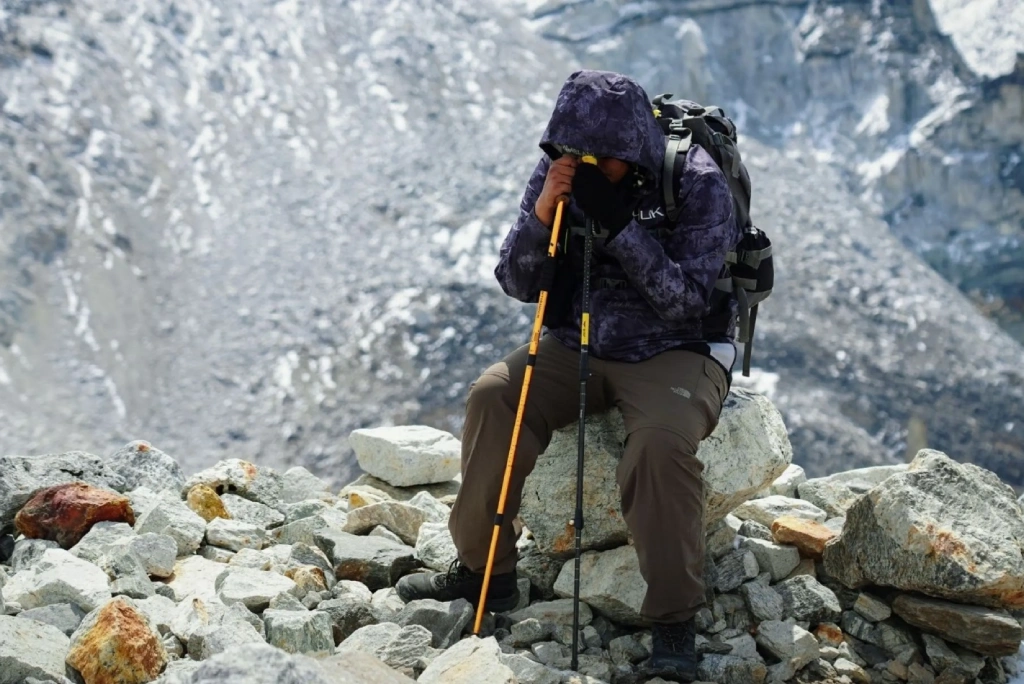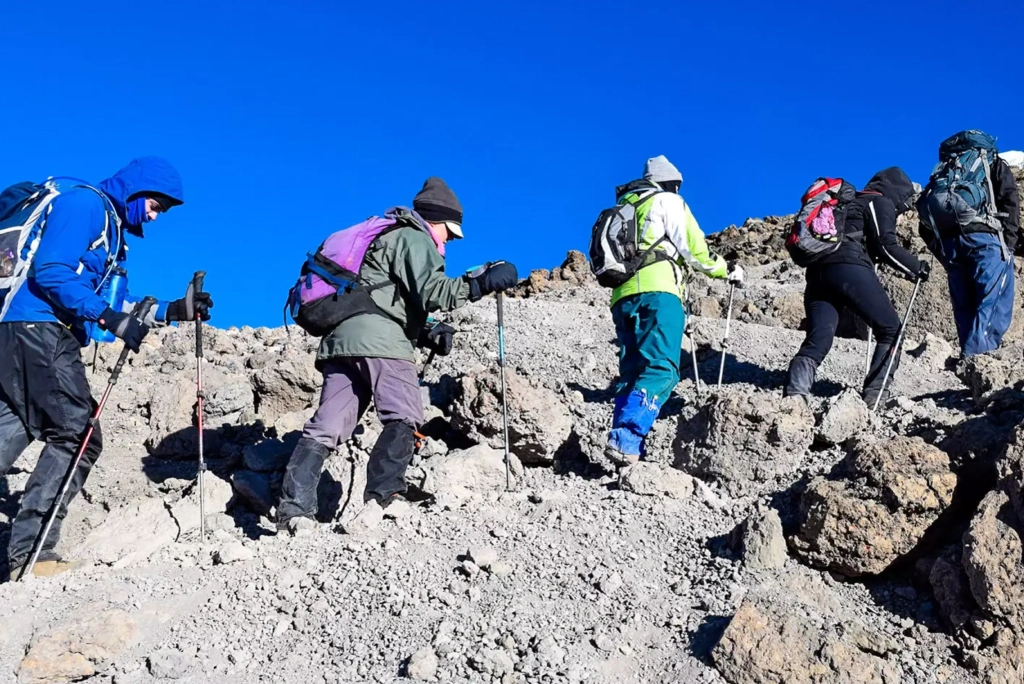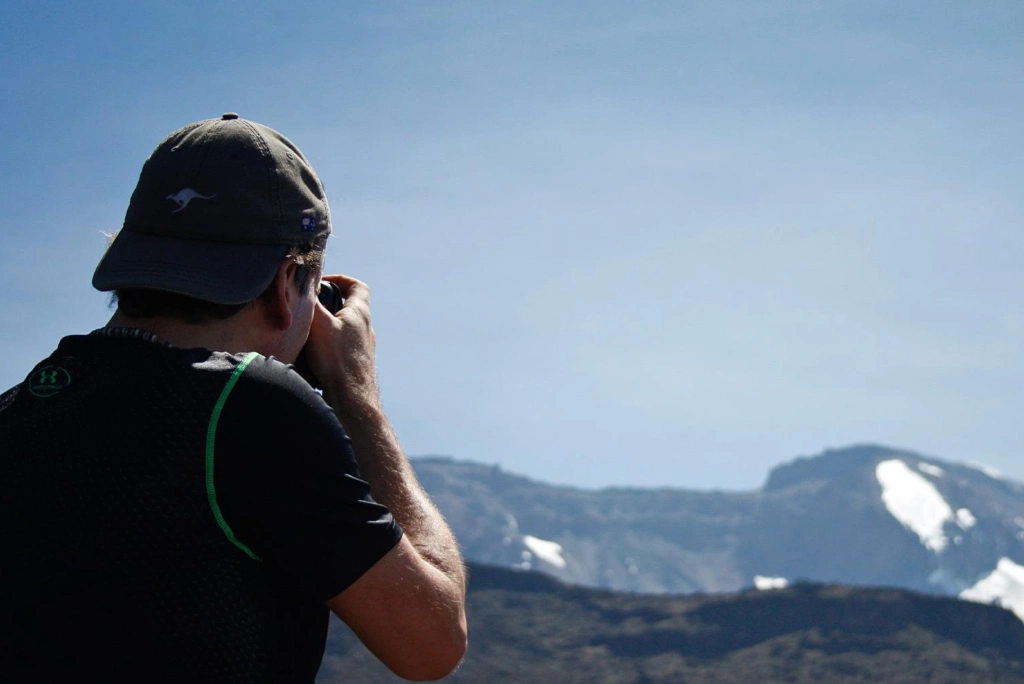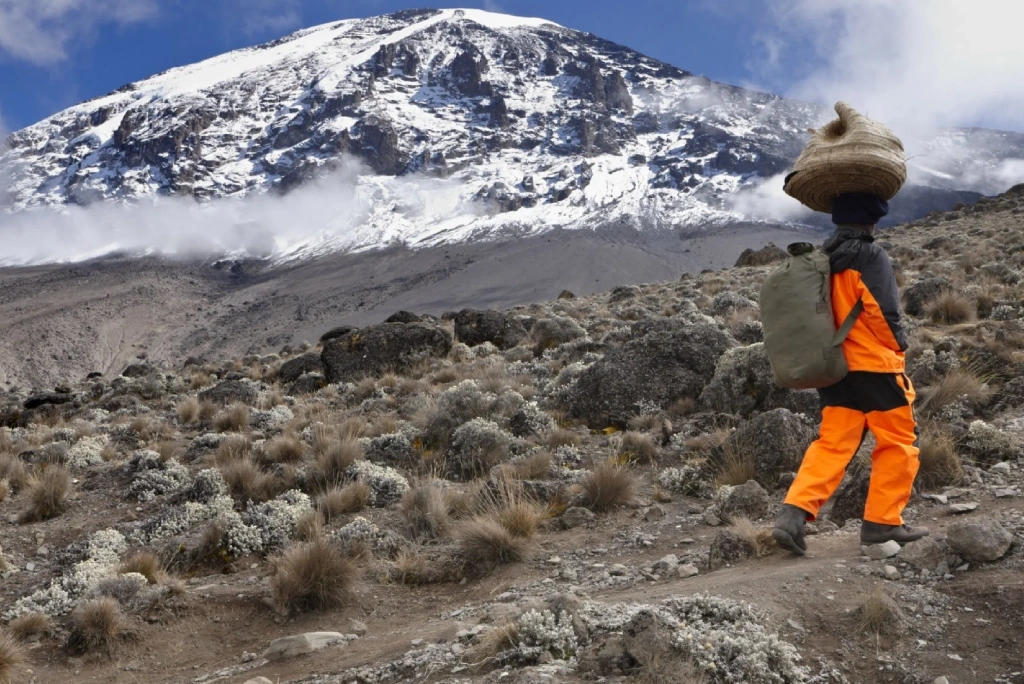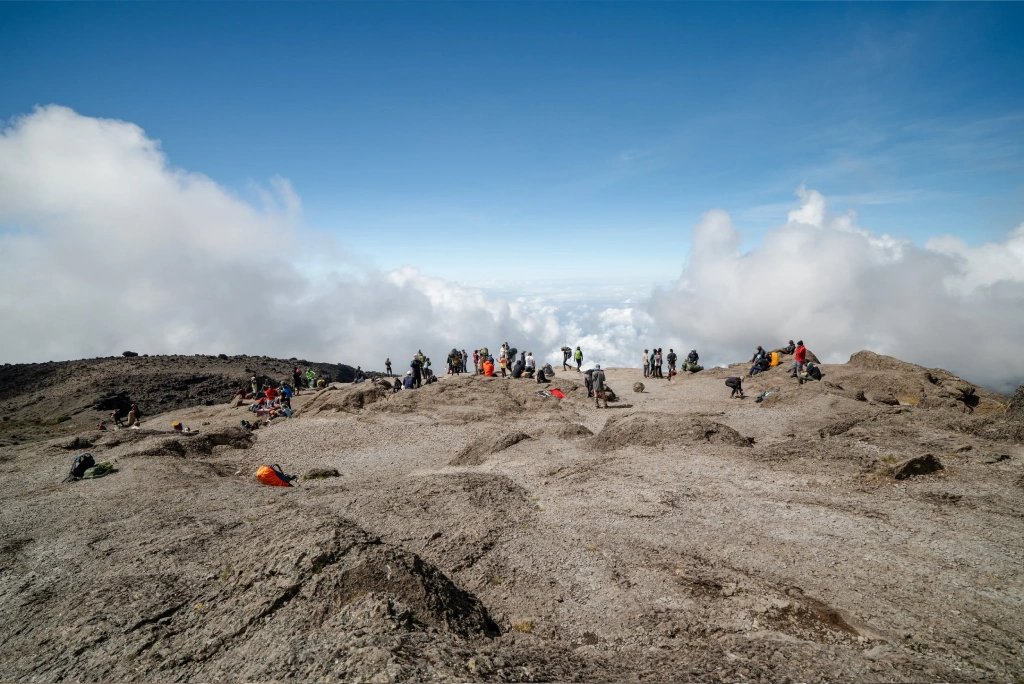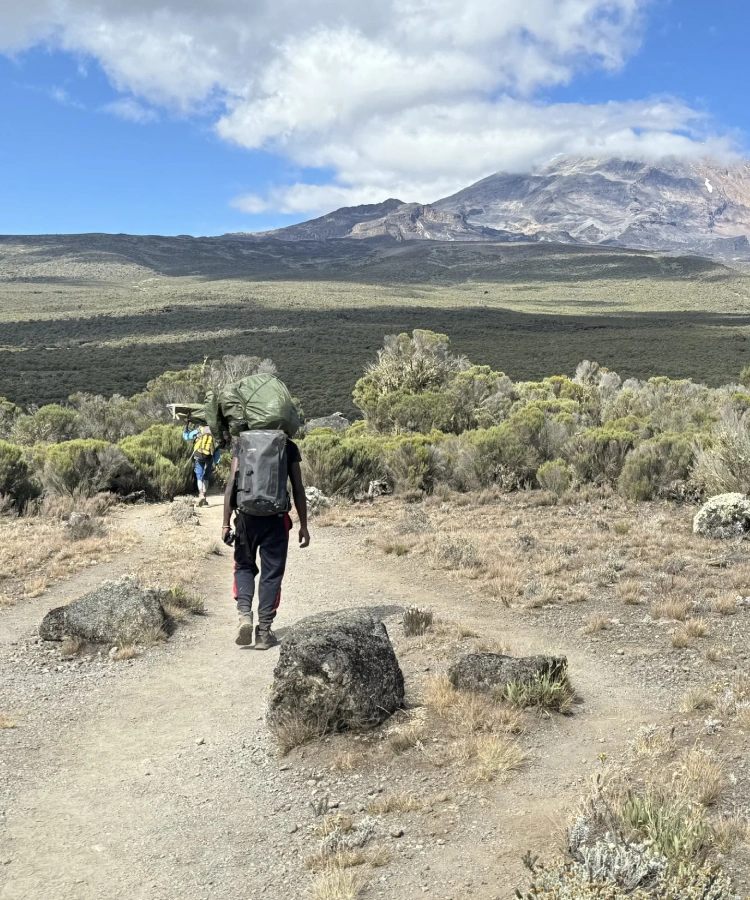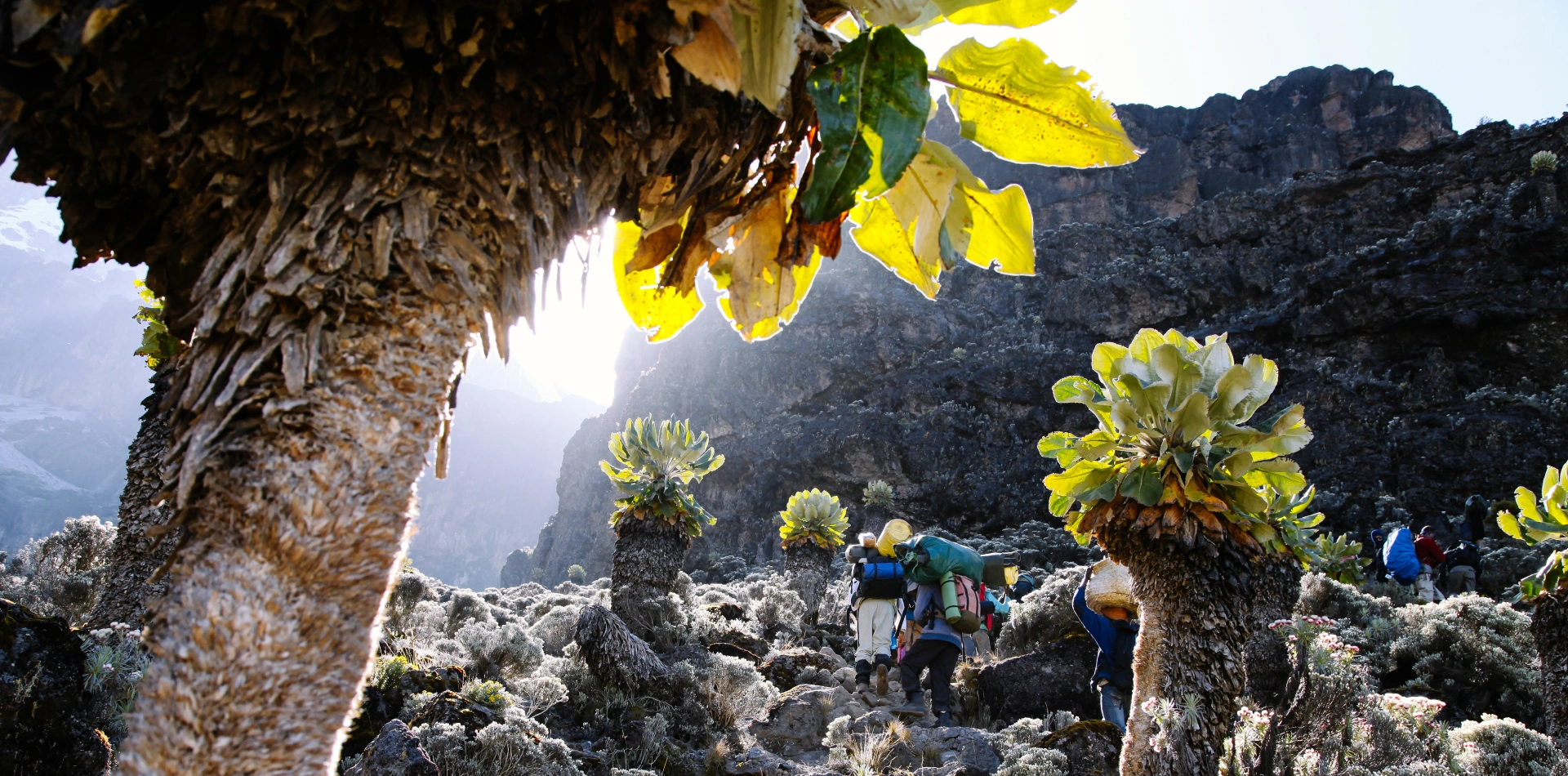
Kilimanjaro Travel Guide
Climb With Confidence—Our Guide Walks Beside You
Climbing Mount Kilimanjaro, Africa’s highest peak, is an unforgettable adventure for trekkers of all levels. Standing at 5,895 meters (19,341 feet), Kilimanjaro offers a range of trekking routes, from the scenic Machame and Lemosho routes to the more straightforward Marangu route. As one of the best and most experienced Kilimanjaro Travel Guides, we are providing Mount Kilimanjaro Guided Hike to enhance your possibility to reach at the summit by more than 90%.
No technical climbing skills are required, making it accessible for fit hikers, but proper acclimatization is essential for a successful summit. The trek takes between 5 to 9 days, depending on the route, and passes through diverse ecosystems, from lush rainforests to alpine deserts. Our Climb Kilimanjaro Guide provides the Kilimanjaro Route and Guide related to the Kilimanjaro Climb Cost, altitude sickness and physical fitness it requires. With our Kilimanjaro Travel Guide, we’ve got all the info you need.
Plan Smart, Climb Safe, Conquer Kilimanjaro With Us
Ready to climb Africa’s highest peak? With our expert guides, tailored itineraries, and safety-first treks, we make Kilimanjaro achievable. Plan smart, climb safe, and conquer Kilimanjaro — start your journey with us today.
Expert Guidance
Our experienced guides aren't just leaders — they're your mountain family. With deep knowledge and care, they ensure every step toward Kilimanjaro's summit is safe and meaningful.
Customized Itineraries
We tailor each itinerary to your pace, goals, and comfort, turning your Kilimanjaro dream into a personalized and unforgettable journey.
Safety Advice
Your well-being is everything. From altitude awareness to daily health checks, our safety-first approach gives you confidence and peace of mind at every elevation.
Altitude Training
Acclimatization is key. We help you prepare with smart altitude training tips and techniques — building strength, stamina, and the mindset to summit successfully.
Packing Tips
We’ve climbed this mountain countless times. Our packing list isn’t just gear — it’s comfort, warmth, and preparedness made simple, so you pack with purpose.
Summit Success
Reaching the top is life-changing. We walk with you — step by step, breath by breath — celebrating every moment until Uhuru Peak is finally yours.
The Roof of Africa Is Calling
Climb beyond limits and stand atop Africa’s highest peak. With trusted guides, breathtaking routes, and a journey like no other — Kilimanjaro awaits. The Roof of Africa is calling you.
When to Climb Kilimanjaro?
Choosing the right time to climb Kilimanjaro affects your experience and success. Learn about weather patterns, crowd levels, and the ideal months to begin your adventure.
- Dry vs Wet Seasons
- Crowd Comparison
- Best Visibility Months
- Summit Success Rates
How Much Does it Cost to Climb ?
Understand the full cost of a Kilimanjaro climb, from park fees and guide services to gear and tipping. Budget wisely without compromising safety and experience.
- Park Fees Breakdown
- Guide and Porter Costs
- Gear Rental Options
- Budget vs Luxury Treks
Kilimanjaro Climbing Foods
Nutrition is key at altitude. Discover what food is served on Kilimanjaro, how it’s prepared, and how we cater to different dietary needs.
- Daily Meal Plans
- Dietary Restrictions Support
- Snack Recommendations
- Hydration Tips
Altitude sickness is the biggest challenge on Kilimanjaro. Learn how to prevent, recognize, and respond to symptoms for a safer and more successful summit.
- AMS Symptoms Explained
- Prevention Techniques
- Acclimatization Schedules
- Medication Options
Kilimanjaro FAQs
Planning to climb Kilimanjaro? Find answers to the most common questions about preparation, safety, routes, gear, and success tips for a rewarding summit experience.
- Best Climbing Seasons
- Training and Fitness
- Route Options Explained
- Packing List Essentials
Electronic Gadgets on Kilimanjaro
Bringing the right gadgets enhances your experience. Learn which devices are useful, how to charge them, and which ones to leave at home.
- Power Bank Recommendations
- Camera & Accessories
- GPS and Tracking Tools
- Headlamps and Batteries
Kilimanjaro Tipping Guide
Tipping on Kilimanjaro is customary and appreciated. Understand who to tip, how much, and how to prepare for this essential part of your trekking experience.
- Understanding Crew Structure
- Daily Tip Breakdown
- Group Climb Guidelines
- Tipping Ceremony Protocol
Kilimanjaro Travel Insurance
Travel insurance is vital for Kilimanjaro Treks. Ensure your policy covers altitude, evacuation, delays, and medical issues specific to high-altitude trekking.
- Coverage Inclusions Checklist
- Medical Emergency Coverage
- Evacuation and Helicopter Access
- Trip Cancellation Protection
We make it easier for everyone to experience the world
Ready to explore Tanzania’s natural wonders? We’re here to help! Whether you’re planning a once-in-a-lifetime safari or a peaceful nature escape, our team makes travel easy and personal. Reach out today—let’s turn your dream of exploring Tanzania and beyond into reality. We make it easier for everyone to experience the world, one journey at a time. Contact us today!
Need I help? Talk to an Expert
+255767493713 +255690129757
Mountain Climbing FAQs
Discover essential information for climbing Tanzania’s iconic peaks—Mount Kilimanjaro, Mount Ol-Donyo Lengai, and Mount Meru. Learn about the best seasons, difficulty levels, required permits, gear recommendations, and safety tips. Whether you’re a first-time climber or experienced mountaineer, these FAQs provide guidance to help you prepare, stay safe, and make your mountain adventure unforgettable.
Climbing Kilimanjaro is challenging but achievable for fit individuals. It doesn't require technical skills, but altitude and endurance are key factors. Choosing a longer route improves acclimatization and success. Mental preparation, physical fitness, and proper gear make a big difference in your summit experience.
The best times are during dry seasons—January to March and June to October. These months offer clear skies, better trail conditions, and higher success rates. Avoid the rainy seasons for safety and comfort. Early booking is also advised due to route popularity.
Yes, Mount Meru is ideal for acclimatization before Kilimanjaro. It reaches 4,566 meters and offers great altitude training. The trek includes wildlife encounters and scenic ridges, preparing your body for Kilimanjaro’s higher elevation and reducing chances of altitude sickness significantly.
Yes, guided climbs are mandatory for both Kilimanjaro and Mount Meru. Guides ensure your safety, manage logistics, and provide expert support. Their local knowledge enhances your journey. On Mount Meru, park rangers accompany all trekkers due to wildlife presence in the area.
Ol Doinyo Lengai is the only active natrocarbonatite volcano in the world, revered by the Maasai as the “Mountain of God.” The steep climb is rewarded with unique lava flows, spiritual significance, and sunrise views over Lake Natron and the Great Rift Valley.
Altitude sickness can affect anyone above 2,500 meters. Symptoms include headache, nausea, and fatigue. To reduce risk, climb slowly, stay hydrated, and acclimatize properly. Longer itineraries on Kilimanjaro and a Mount Meru pre-climb significantly boost altitude adaptation and summit success.
You’ll need layered clothing, waterproof outerwear, sturdy hiking boots, sleeping gear (for Kilimanjaro and Meru), headlamp, trekking poles, and hydration packs. For Ol Doinyo Lengai, include lightweight but grippy footwear and breathable clothing due to its steep, dusty volcanic terrain.
What Customers Say About Us



